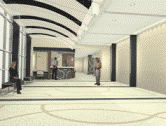
College of Dentistry: Faculty Publications
Document Type
Article
Date of this Version
2011
Citation
Head & Face Medicine 2011, 7:8
Abstract
Background: Postoperative mobidity following third molar surgery is affected by a number of factors. The study of these factors is essential for effective planning and limitation of morbidity. The aim of this study was to determine the effect of age, type of impaction and operative time on immediate postoperative tissue reactions following mandibular third molar surgery.
Methods: Consecutive patients with impacted mandibular third molar teeth were studied. All the third molars were classified according to Winter’s classification. Surgical extraction was performed on all the patients by a single surgeon under local anaesthesia. The operation time was determined by the time lapse between incision and completion of suturing. Postoperative pain, swelling and trismus were evaluated.
Results: There were 120 patients with an age range of 19-42 years. Patients in the age range of 35-42 years recorded a lower pain score (p = 0.5) on day 1. The mouth opening was much better in the lower age group on day 2 and 5 (p = 0.007 and p = 0.01 respectively). Pain, swelling and trismus increased with increasing operative time. Distoangular impaction was significantly associated with higher VAS score on day 1 and 2 (p = 0.01, 0.0, 04). Distoangular and horizontal impaction are associated with a higher degree of swelling and reduced mouth opening on postoperative review days. Vertical impaction was associated with the least degree of facial swelling and best mouth opening.
Conclusions: Increasing operating time and advancing age are associated with more postoperative morbidity, likewise distoangular and horizontal impaction types.


Comments
© 2011 Bello et al; licensee BioMed Central Ltd. This is an Open Access article distributed under the terms of the Creative Commons Attribution License